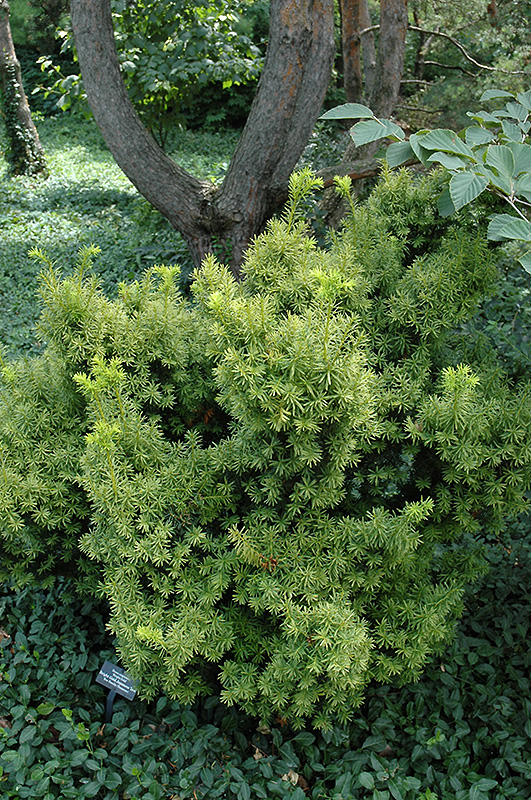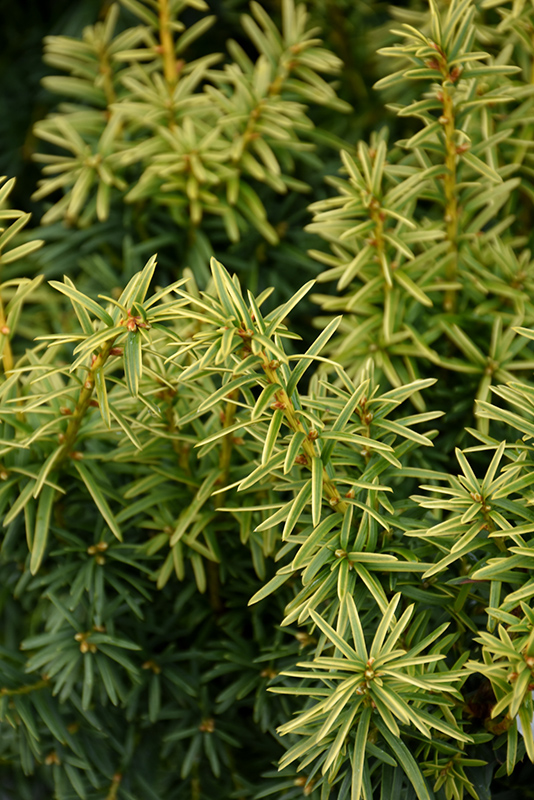>> Home
Dwarf Bright Gold Yew
Taxus cuspidata 'Dwarf Bright Gold'
Height: 6 feet
Spread: 6 feet
Sunlight:
![]()
![]()
Hardiness Zone: 4
Description:
A brilliantly colored yew whose individual needles have a rich gold band around the edges, from a distance the effect is a glowing yellow, eventually becomes a large spreading shrub; makes a fine foundation garden plant, best with some shade
Ornamental Features
Dwarf Bright Gold Yew has attractive gold-variegated green foliage which emerges yellow in spring on a dwarf conifer with an upright spreading habit of growth. The ferny sprays of foliage are highly ornamental and remain green throughout the winter.
Landscape Attributes
Dwarf Bright Gold Yew is a multi-stemmed evergreen shrub with an upright spreading habit of growth. Its relatively fine texture sets it apart from other landscape plants with less refined foliage.
This is a relatively low maintenance shrub, and can be pruned at anytime. It has no significant negative characteristics.
Dwarf Bright Gold Yew is recommended for the following landscape applications;
- Accent
- Mass Planting
- Hedges/Screening
- General Garden Use
- Topiary
Planting & Growing
Dwarf Bright Gold Yew will grow to be about 6 feet tall at maturity, with a spread of 6 feet. It tends to fill out right to the ground and therefore doesn't necessarily require facer plants in front, and is suitable for planting under power lines. It grows at a slow rate, and under ideal conditions can be expected to live for 50 years or more.
This shrub does best in a location that gets morning sunlight but is shaded from the hot afternoon sun, although it will also grow in full shade. Keep it away from hot, dry locations that receive direct afternoon sun or which get reflected sunlight, such as against the south side of a white wall. It does best in average to evenly moist conditions, but will not tolerate standing water. It may require supplemental watering during periods of drought or extended heat. It is not particular as to soil type or pH. It is highly tolerant of urban pollution and will even thrive in inner city environments, and will benefit from being planted in a relatively sheltered location. Consider applying a thick mulch around the root zone in winter to protect it in exposed locations or colder microclimates. This is a selected variety of a species not originally from North America, and parts of it are known to be toxic to humans and animals, so care should be exercised in planting it around children and pets.

